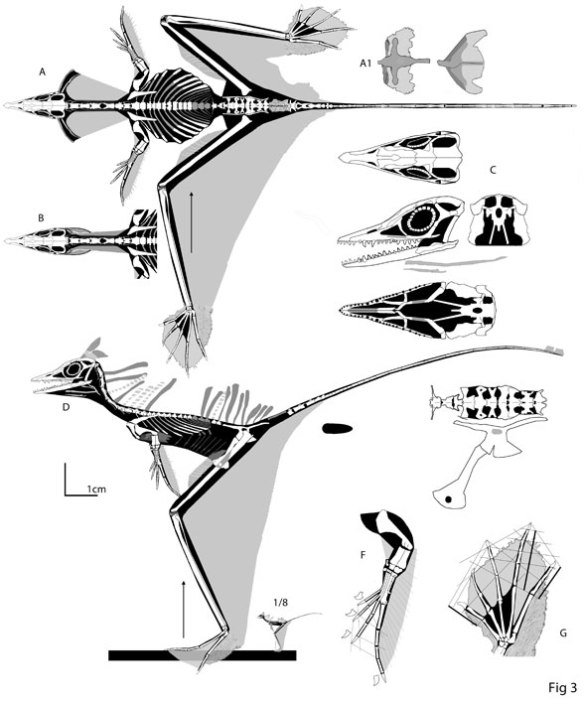
Figure 1. Eudimorphodon ranzii nests at the base of all non-dimorphodontid pterosaurs. Here bones are colorized using DGS and reconstructed below in several views. I can’t identify all the bones here, just the easy ones. Red spot in orbit is the rotated pterygoid with teeth. Other pterosaurs don’t have such teeth, but then other pterosaurs don’t have such marginal teeth either. Line art from F. Dalla Vecchia.
This is Eudimorphodon (Late Triassic), the basalmost of all the non-dimorphodontid pterosaurs. The in situ skull is crushed (Fig. 1), so if you want to see what it looks like in three views you take the parts and put the model back together.

Figure 2. Lateral, dorsal and cross-sectional views of Eudimorphodon ranzii. Note the overlap of the posterior ribs over the hind limbs and the very wide torso. The cross section shows the 2nd dorsal ribs and the 23rd. Note the small ischium which could only produce small eggs. A little taller and wider than we thought before. The forelimbs are pretty short relative to the torso.

Close up of Eudimorphodon jugal and pterygoid (yellow) from an old photocopy from back in the day.
We looked at
the post-cranium of Eudimorphodon earlier here. The torso is weirdly flattened, like that of Sharovipteryx, making the entire body a wing shape.

Figure 3. Sharovipteryx reconstructed. Note the flattened torso.
References
Wild R 1978. Die Flugsaurier (Reptilia, Pterosauria) aus der Oberen Trias von Cene bei Bergamo, Italien. Bolletino della Societa Paleontologica Italiana 17(2): 176–256.
Zambelli R 1973. Eudimorphodon ranzii gen.nov., sp.nov. Uno Pterosauro Triassico. Rendiconti Instituto Lombardo Accademia, (rend. sc.) 107: 27-32.

The hole in the jugal is just a crack where the bowl-shaped part was crushed flat.
Do you have a bigger picture of the supposed pterygoid teeth? They should stand out even without being colored in, but they don’t seem to.
In interpret something palatal or occipital popping through the jugal after crushing. The rims of that opening seem regular, not the result of breakage, but I could be wrong. If so it is an autapomorphy, but then so many other traits in this pterosaur are unique, like the pterygoid teeth. But then the ventral pterygoid is not observable in other Triassic pteros or fenestrasaurs. Image from Wild 1978 of the jugal and pterygoid added just now.